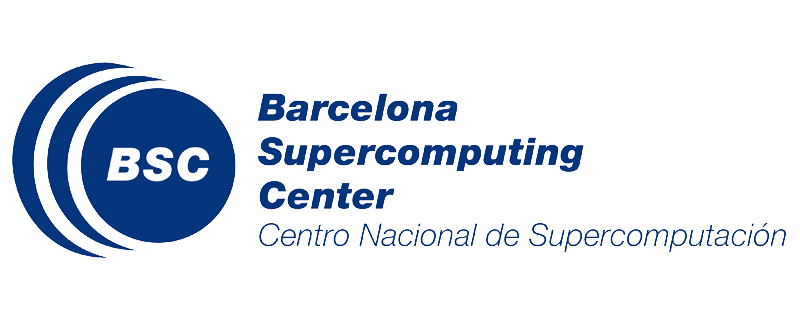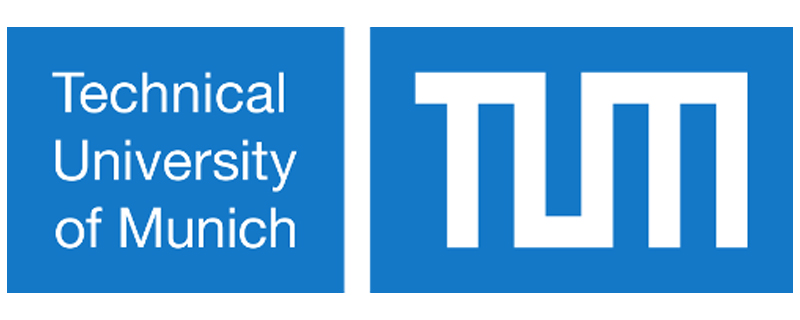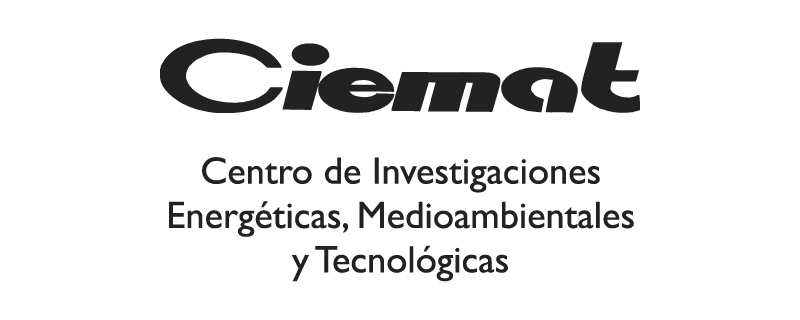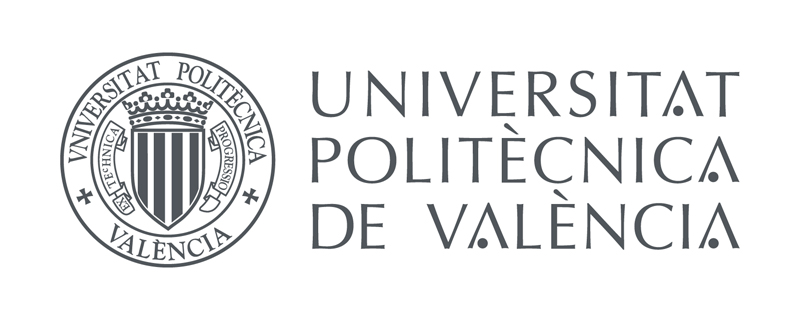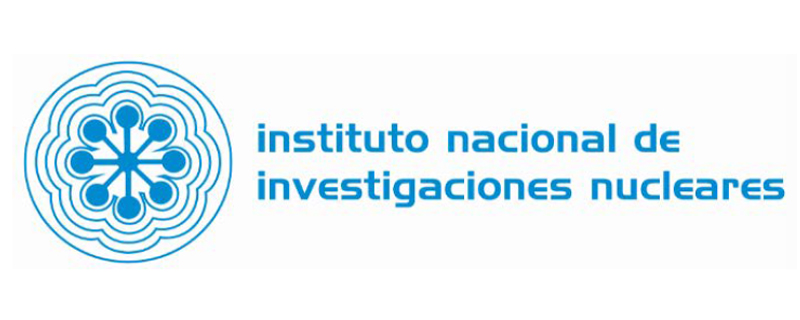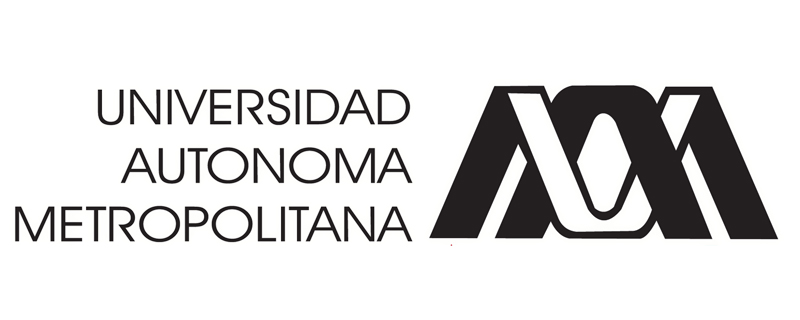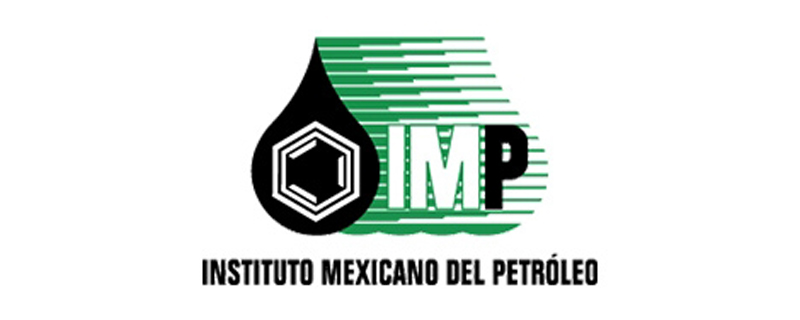Partners
The Barcelona Supercomputing Center (BSC) was established in 2005 and is the Spanish national supercomputing facility and a hosting member of the PRACE distributed supercomputing infrastructure. The Center houses MareNostrum, one of the most powerful supercomputers in Europe. The mission of BSC is to research, develop and manage information technologies in order to facilitate scientific progress. BSC combines HPC service provision, and R&D into both computer and computational science (life, earth and engineering sciences) under one roof and currently has over 350 staff from 41 countries. BSC has collaborated with industry since its creation, and participates in various bilateral joint research centers with companies such as IBM, Microsoft, Intel, NVIDIA and Spanish oil company Repsol. The centre has been extremely active in the EC Framework Programmes and has participated in seventy-nine projects funded by it. BSC is a founding member of HiPEAC, the ETP4HPC and other international forums as well as hosting member of the PRACE distributed supercomputing infrastructure. The centre also coordinates the RISC project, which is creating a network of HPC research centres in Latin America and the EU. The mission of the Computer Applications in Science and Engineering (CASE) Department within BSC is to develop High Performance Computational Mechanics tools for simulating complex coupled problems and capable of running with high efficiency in massively parallel supercomputers. CASE is a multidisciplinary research department that European and national research projects and in privately funded industrial partnerships. The research lines include Physical and Numerical Modelling, Mesh Generation and Numerical Solution Algorithms, High Performance Computing in CM (HPCM), Parallelization in Distributed and Shared memory machines, Numerical Kernels and Optimization, Algebraic Solvers, Visualization and post-processing, Software engineering for HPCM, and more recently, Social Networks.
The Technical University of Munich (TUM) is characterised by a unique profile with its core domains natural sciences, engineering, life sciences and medicine. TUM is committed toward the major societal challenges of the 21st century in areas such as energy, climate and environment, natural resources, health and nutrition, communication and information, mobility and infrastructure. Besides research and teaching, TUM inspires and pro-actively empowers its academics (over 500 professors, over 10,000 members of staff), alumni and over 40,000 students to think and act entrepreneurially.
TUM is regularly among the best national performers in international rankings. In the last years, it was classified repeatedly as the best German university in the prestigious Shanghai Ranking (similar for the Department of Informatics). In the Global Employability Ranking 2016 in which companies worldwide evaluate the quality of university graduates, TUM was ranked 8th and was the only German university among the top 25. With its institutional strategy “TUM. The Entrepreneurial University”, TUM has been among the first three German universities in 2006 to be successful in all three funding lines of the national Excellence Initiative.
University Grenoble Alpes (UGA) is born January 1st, 2016, from the merger of three Grenoble universities: Joseph Fourier University (UJF), Pierre Mendes France University (UPMF) and Stendhal University. UGA is a research intensive university in an international and high tech environment: 45 000 students; 3700 PhD students, 45% from abroad; 2200 permanent academic staff; 80 laboratories organized in 6 research departments; 14 doctoral schools. The city hosts 5 large international research facilities (The European Synchrotron - ESRF, ILL, The European Molecular Biology Laboratory - EMBL, IRAM-Institute, GHMFL), that attract thousands of researchers every year. UGA is a major contributor at a worldwide level in several strong key fields, with over 10% of French scientific publications. Moreover, UJF benefits from an international recognition: top 200 in Shanghai Ranking 2015; 181th in Taiwan ranking 2014 (46th in Environment, 72nd in Natural Sciences and 80th in Physics), 178th in Times Higher Education Rankings 2014-2015. ISTerre, is a Earth Science research lab, joint research unit of UGA, CNRS, IRD, IFFSTAR and Univ. Savoie Mont-Blanc. Researchers with strong expertise in geophysical imaging by full waveform inversion are involved in ENERXICO project.
CIEMAT is a Spanish Public Research Institution (www.ciemat.es). Since its formation in 1951, it has developed and led R&D projects in the fields of Energy, Environment and Technology, placing the institution at the forefront of science and technology. As a technological research centre, CIEMAT fosters links between academia and industry. Its main activities include: to promote the introduction and improve the competitiveness of renewable energies on the energy market; to improve the efficiency and environmental quality of fossil fuels; to optimise waste management and safety of nuclear fission energy; to demonstrate the role of nuclear fusion as a future energy alternative; to assess the environmental impact of energy; to promote the development of environmentally-friendly technologies that respect the environment; to transfer horizontal technologies to industry; to improve scientific returns derived from CIEMAT activities; to strengthen industrial participation in international projects with high technological content; and, to foster technology transfer, training and scientific outreach. CIEMAT is the Spanish major R&D centre on energy. It has participated in 79 projects co-funded by the 7 Framework Programme, 34 out of which in the energy area and 9 in ICT.
Repsol is an integrated global energy company with vast sector experience. We carry out Upstream and Downstream activities across the world. At Repsol we believe that through innovation we can create a new energy model. That is why we are present in areas of high energy potential such as Brazil, Russia and the U.S. Thanks to a steady, consolidated growth strategy, we have developed new and attractive areas of business within the company. We are concerned with people's well-being and the economic growth of society which is why at Repsol, we contribute with talent, effort and enthusiasm to building intelligent and sustainable energy solutions in the long term. This is always done using processes that respond to the strict. Our company vision is a future vision, which upholds our core values: all of us who are part of Repsol feel very identified with them. Our organizational structure allows us to strengthen both the corporate area and that of our main activities. At Repsol we carry out activities in Upstream (Exploration and Production of hydrocarbons) and Downstream, which includes Refining -where we are European leaders with products and services that respond to the highest quality and safety processes, Marketing, Liquefied Petroleum Gas, Chemicals and New energy. We are committed to technological innovation as the key to building a more efficient, secure, competitive and sustainable energy model. This commitment is embodied in the Repsol Technology Center: a leading European center where we promote R&D+i with investment of nearly €100 million annually, all under the slogan: let's invent the future. Repsol, as an energy company that engages with society and is responsible for its surroundings, is tackling the double challenge of responding to ever-increasing energy demand whilst maintaining a high level of commitment to the environment. Without doubt, R&D&I is the most valuable tool with which to achieve this objective, and through which we study and develop alternative forms of energy and take full advantage of all production processes.
Iberdrola performs activities of generation and sale of electricity. Iberdrola is one of the largest wind energy companies worldwide and the fourth utility company. Boasting an operational wind energy asset of more than 16.000MW and a total generation power of more than 48.500MW, the company has consolidated its leadership position at the head of the worldwide renewable energy sector. Furthermore, the Company has achieved a net output above 140.000GWh with more than 30 million customers.
Iberdrola has become in the last 15 years a multinational company, operating in more than 20 countries, including the world markets with the greatest growth and development potential in this sector. The main five business territories of the Group are Spain, USA, UK, Mexico and Brazil. Iberdrola Mexico is the first private energy producer in Mexico with more than 6.400MW of installed capacity, of which 367MW correspond to wind farms and 270MW are PV plants.
Atos is a global leader in digital transformation with over 110,000 employees in 73 countries and annual revenue of over € 11 billion. European number one in Cloud, Cybersecurity and High-Performance Computing, the Group provides end-to-end Orchestrated Hybrid Cloud, Big Data, Business Applications and Digital Workplace solutions. The group is the Worldwide Information Technology Partner for the Olympic & Paralympic Games and operates under the brands Atos, Atos Syntel, and Unify. Atos is a SE (Societas Europaea), listed on the CAC40 Paris stock index. The purpose of Atos is to help design the future of the information technology space. Its expertise and services support the development of knowledge, education as well as multicultural and pluralistic approaches to research that contribute to scientific and technological excellence. Across the world, the group enables its customers, employees and collaborators, and members of societies at large to live, work and develop sustainably and confidently in the information technology space.
Universitat Politècnica de València (UPV) is a public academic institution that is specialised in both academic and research activities in the field of Engineering. CMT-Motores Térmicos (CMT) is a very dynamic and internationally well-known research institute inside the UPV made up by around 120 people, including more than 60 professors and researchers, and around 50 laboratory technicians and PhD students. For more than 25 years, this specialized group has conducted basic and applied research for the automotive, energy and aerospace industry for better understanding of the physical phenomena happening in different technical systems. The main research topic at CMTMotores Térmicos is the analysis of thermal and fluid-dynamic processes through the components of reciprocating Internal Combustion Engines (ICE). During the last 10 years the group has participated in several EU funded projects, more than 50 projects with National public funding, and more than 200 private contracts on ICE with more than 20 international leading companies such as Liebherr-Aerospace, Donaldson Aerospace, General Electric, General Motors, Peugeot-Citroen, Ford, Renault, Fiat, Toyota TME, among others.
The Instituto Nacional de Investigaciones Nucleares (ININ) is one of the three research institutes of the Secretary of Energy in México. The ININ is devoted to research and technological developments in problems related to nuclear and other energies. In the Department of Physics of ININ, the Computational Fluid Dynamics (CFD) Group has been developing numerical methods during the past three decades for solving various problems in science and engineering, in particular using the Smoothed Particle Hydrodynamics technique, but also using other methods, see below. The CFD ININ group was also involved in the founding of the Cinvestav-Abacus supercomputer Centre, the largest in México. Most numerical simulations will be carried out in the Cinvestav-Abacus supercomputer, so we have the computer resources required by the project that involves developing exascale applications. The proposed tasks are aimed to developing an SPH multiphase and multicomponent (i.e. compositional) simulator for fractured oil fields optimized for exascale computer systems and this involves adding new physics and chemistry, developing a proper equation of state, user interfaces, comparing results to commercial simulators and optimize our existing codes for exascale systems. This part of the project is an extension of developments of the CFD ININ group and collaborators during the past two decades.
The UAM-A is one of five campuses that the UAM university has around Mexico City and is a leading, technologically oriented institution in Mexico. It offers graduate courses in many areas of engineering and stands for the interdisciplinary integration of engineering, natural and social sciences on a foundation of top-flight disciplinary research. Established in 1974, the UAM is a non-profit public, higher education institution located in the urban setting of Mexico City, with an enrollment range of over 45,000 students. The UAM-A is the second larger branch campus of UAM and is one of the Mexico’s leading universities for engineering. According to the Times Higher Education’s World University Rankings 2018 data, it is ranked as the third best university of Mexico.
The Instituto de Ingeniería (UNAM- IINGEN) is the most prestigious engineering research center in Mexico, and it is also the one with the longest tradition. Since its inception in 1956, the IINGEN has made important contributions in key development areas for the country, thus covering a wide spectrum of disciplines (e.g. seismic, civil, oceanic, hydrological, mechanical, environmental, electrical, etc.). Its commitment to the formation of highly qualified researchers and engineers is a core element of the Institute’s mission. Currently, the IINGEN’s staff is constituted by 99 scientists, 104 academic technicians, 500 MSc and PhD students, and nearly 200 persons fulfilling support and administrative activities. The IINGEN’s research facilities span an area of 26.000 m2 and comprise 18 buildings. In addition, the Institute operates other regional research centers across the country. Besides its research activities, the IINGEN provides specialized consultancy services to public institutions and private companies. This has led to a long and fruitful relationship with the productive sectors in the country. The magnitude, relevance and diversity of projects that the Institute has developed over the years is the clearest evidence of this privileged relationship.
The Center for Research and Advanced Studies (Cinvestav) was created in 1961, by presidential decree, as a decentralized public body with its own legal personality and assets. There are twenty-eight research departments covering areas in Exact Sciences, Biological Sciences, Engineering and Computer Science, among others. These are distributed across ten campuses throughout Mexico. Mission: Contribute in an outstanding way to society development through cutting-edge scientific and technological research and the training of high-level human resources. Vision: To be the leading institution in high-level researchers training and borderline scientific and technological knowledge generation. Cinvestav has a growing national and international impact that contributes in a visible and relevant way to the solution of the country's problems, expanding its presence in society and in contemporary culture. Within Cinvestav’s researchers, 99.3% hold a Dr. Sc. degree and 92% are members of the Mexican National System of Researchers SNI. Some distinctions awarded to distinguished fellows are: 30 Awards from the Mexican Academy of Science, 25 National Science Awards, 7 Members of the Colegio Nacional (the highest possible national distinction), Prince of Asturias, Palms of the French Academy, 9 TWAS Awards, among others. Cinvestav is in the 3 top scientific and technological institutions of Mexico, and one of the top 5 institutions with most patents in the country.
“ABACUS” The Laboratory for Applied Mathematics and High Performance Computing of Cinvestav formally began in 2012 and was conceived for the development of frontier knowledge, high-impact applications and technological innovation. It is conformed by top-level academic staff in distinct knowledge areas. ABACUS has held more than 150 associated researchers, research stays and postdoctoral stays. It has offered more than 50 courses, seminars, and workshops on themes related to high performance computing and its applications. ABACUS facilities house ABACUS-I supercomputer, (which ranked 255th. in the July 2015 TOP500 list). ABACUS-I has provided service to more than 120 projects, more than 300 users, and has been involved in more than 275 academic products among books, articles, lectures, and others. All these actions allowed Cinvestav to position itself within the national leaders in applied mathematics and high performance computing.
The Instituto Mexicano del Petroleo (IMP) is more than 50 years old and owns to the Mexican State. Whose purpose is to generate technical and technological capabilities to the oil and gas industry. IMP cover all the operational parts of the chain value of the oil and gas industry, from upstream to downstream activities, focused on generation of economic value. We solve high impact technological problems in order to achieve business goals with high skill staffs.
• 2,520 researchers, specialists and technicians
• 28% with Master and PhD degrees
• 1.8 MM Engineering man power
• 21 training centers
• 12 Laboratory groups
• 1,250 Assays and services
• 11 Pilot plants
• 94 Products and services
- E&P
- Engineering
- Talent development
• 257 Specialized softwares
• Library with the greatest oil and gas information available in Mexico
IPN-ESIA is a fundamental member of the largest school of civil engineering in Mexico, and it is key to the social and economic development of our country as to be the generator and diffuser agent of science and technology applied to civil engineering. At IPN-ESIA, students, professors and researchers share a same space for discussion and dialogue to create, disseminate, exchange, test, apply, refute and disseminate cutting edge, basic and applied knowledge, not only to solve the immediacy of engineering problems but to innovate and modernize in the long term, the practice of Mexican engineering in a globalized, technic and unlimited global context.
PEP, Productive Subsidiary Company (PEMEX) dedicated to research, explore activities, manage wells (fields and oil reserves), develop oil fields production, and deliver refine oil to the productive chain.
